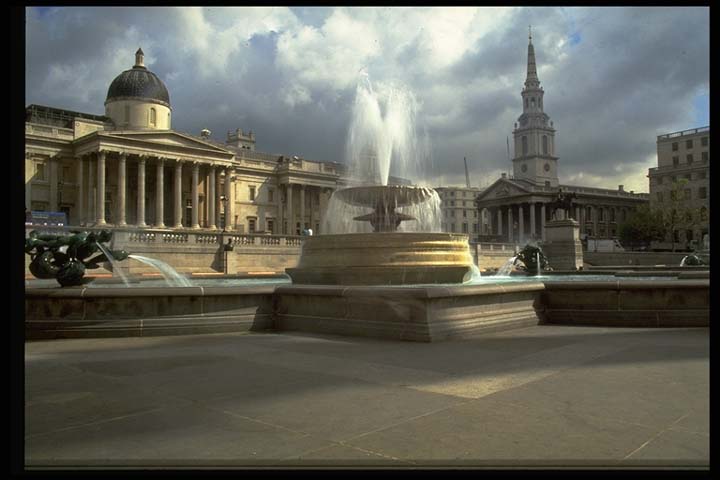- National Gallery
-
(in Britain) the buildings in Trafalgar Square, London, which contain the largest collection of paintings belonging to the nation. The paintings represent every period and style in western art from the 14th to the early 20th century. The main building was completed in 1838, and a new building, the Sainsbury Wing, paid for by members of the family that owns Sainsbury’s and designed by the US architect Robert Venturi, was added in 1991. More modern paintings are held at Tate Britain and Tate Modern.

* * *
German Nationalgalerie,German art museum in Berlin that was founded in 1861 and opened to the public in 1876. The National Gallery has one of the world's finest collections of German painting and sculpture from the late 18th to the mid-20th century. Its holdings include many works by Neoclassical, Romantic, German Impressionist, and Expressionist artists. A separate gallery houses frescoes done by the Nazarene painters in the Casa Bartholdy in Rome, which were taken to Berlin in 1887. The National Gallery lies in the former East Berlin and was thus administered by East Germany from 1949, when the museum was partially reopened after war damage had been repaired, to 1990, the date of German reunification.art museum in London that houses Great Britain's national collection of European paintings. It is located on the north side of Trafalgar Square, Westminster (Westminster, City of).The National Gallery was founded in 1824 when the British government bought a collection of 38 paintings from the estate of the merchant John Julius Angerstein (1735–1823). The collection was first exhibited on May 10 of that year in Angerstein's house at 100 Pall Mall, but in 1838 it was reopened to the public in its current premises. This Neoclassical structure, designed by the Greek Revival architect William Wilkins, was enlarged in 1860, 1876, 1886, and 1975 and in 1991 with the addition of the Sainsbury Wing, by the American architect Robert Venturi (Venturi, Robert). Until the opening of the Tate Gallery (Tate galleries) in 1897, modern British art was also displayed at the National Gallery. Since 1856 the National Gallery also has had responsibility for the historical portraits housed in the National Portrait Gallery.The collection now comprises only some 2,000 works, but it is regarded by many as the most representative sampling of European painting in the world. It has the most comprehensive collection of Italian Renaissance paintings (painting, Western) outside Italy, with works by most of the great Florentine and Venetian masters of that period. There are also impressive holdings of works by various British, Dutch, French, Spanish, and Flemish painters from the 15th to the 19th century. Among the artists represented are Leonardo (Leonardo da Vinci), Raphael, and Vermeer (Vermeer, Johannes). The museum's small collection of French Impressionist (Impressionism) and Postimpressionist (Post-Impressionism) paintings is notable, and most of the works are exhibited.Norwegian Nasjonalgalleriet,in Oslo, Norwegian national art museum, built in 1836 and enlarged in 1903–07, devoted primarily to Norwegian paintings and sculpture of the 19th and 20th centuries. In 2003 the National Gallery joined with three other Norwegian museums to become the National Museum of Art, Architecture, and Design. It possesses a significant collection of paintings by the Expressionist artist Edvard Munch. There is also a fine collection of modern French works, including paintings by Henri Matisse, Paul Cézanne, and Vincent van Gogh. Works by Danish and Swedish painters are also in the collection.* * *
Universalium. 2010.
